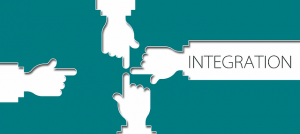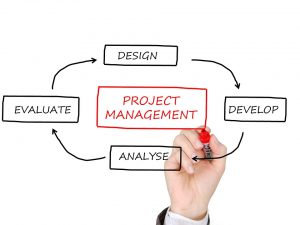Best Practices for Technology Projects
Posted on: 02/22/2019, by : Jared Smith
After more than 20 years implementing technology solutions in industries as varied as manufacturing, retail, supply chain and logistics, government and health care, we have been able to identify five areas that must be carefully considered and monitored to insure a successful project. In identifying our best practices, we define a successful project as one that is delivered on schedule and on budget, provides the promised increases in efficiency and productivity, and delivers a measurable value return on investment to the organization.
Our team has worked to synthesize this extensive knowledge and experience into a documented process that allows us to leverage lessons learned across seemingly disparate industries and business processes into a best practices strategy that can benefit organizations in any industry.
This document is not meant to provide specific tactical steps to be followed but rather, a high-level overview that allows us to begin helping our clients right from the start. We ensure that these strategic activities are built into the project plan and that they are monitored to completion to provide the highest probability of success. Also, recognize that there can be considerable overlap between two or more of these areas in many places. This process is designed to evaluate each not only in isolation but also holistically, as it relates to the other areas.
 A. Technology
A. Technology
While this seems obvious, many organizations do not do an adequate job in vetting and prototyping available technologies. We assist our customers in evaluating all available technology platforms that make sense in their environment. With the advent of cloud, IOT, RFID and sensing technologies and voice and wearable tech, often there are multiple enabling technologies that can be utilized. Suitability to task, ergonomics, product life cycle and road map and of course, cost all need to be weighed in order to make the right technology decision. For example:
• Technology Silo – Many organizations rely on a particular vendor for “supported or recommended” hardware and software platforms without evaluating other areas in the enterprise where they may be used. This can lead to complexity and increased IT support costs due to multiple platforms being installed.
By properly aligning IT capabilities across the enterprise and reducing duplication an organization can easily reduce capital investment and operating costs by 25% to 50%.
• Planning for Success vs. Planning for Failure – Too often companies purchase solutions that meet minimum system requirements or make decisions based on “Happy Path” assumptions. It is critical to search for potential points of failure and verifies that there are fall backs built into the system. The more mission critical the business process the more important this planning becomes.
We have seen an initial upfront investment that increased project cost by 10% removed from the project for budget reasons result in rework that delayed the project by several months and added nearly 25% to the final project cost.
• Future Proofing and Lifecycle Management – Knowing a product’s current state in the product lifecycle as well as the manufacturer’s product road map can prevent buying too early in the product life cycle when the technology might not be “fully baked” or too late when it becomes technologically obsolete prior to full depreciation.
Careful analysis of where technology is in the product lifecycle can add 12 to 18 months service life over simply buying the latest.
• Incomplete analysis – Too many technology decisions are made without the proper level of testing and prototyping. Nothing can replace proving out suitability to task in the exact production environment (or as close as possible).
Making technology investments based on emotion costs organizations millions of dollars. Taking the time to develop an Evaluation Scorecard with specific, agreed upon, weighted criteria can bring objectiveness to the selection process and ensure the solution will meet requirements.
 B. Data
B. Data
Technology is ultimately about data and it is critical to document all relative data elements, integrations, reporting requirements, cleanliness and value to the organization. This process is too often given little to no time and budget when planning a project.
Some of the data questions that need to be answered include:
• What Masterfile data is required for this project and where is it located?
• Is that data valid, pertinent and in a standard format?
• What other systems utilize this data and can view/change/add/delete data?
• What new data will be required?
• How will resultant data be utilized?
• What system is the “single source of the truth”?
“Poor data quality costs the US economy around $3.1 trillion a year.” – IBM
“Poor quality data is costing businesses at least 30% of revenues.” – Ovum Research
“Knowledge workers waste 50% of their time in hidden data factories, hunting for data, finding and correcting errors, and searching for confirmatory sources for data they don’t trust.” – Harvard Business Review
 C. Integration
C. Integration
It is impossible to overemphasize the importance and risk of systems integration. Always a challenge, we now live in an interconnected world of on-premise, cloud and SaaS systems that require advanced network, security and fault tolerance planning. In addition, we need to be able to efficiently and accurately share data with vendors, partners, and customers. Integration is the heavy lifting of any system implementation and requires thorough analysis and planning.
Areas of risk in systems integration include:
• Availability of clean Masterfile data.
• Methods for updating changes to data in the appropriate time frame for business execution.
• Complete and accurate documentation of available integration tools (API/XML/SOAP/REST/CSV)
• Glossary issues in how different organizations categorize integrations. For example, many times “EDI, “ASN” and “Order Import” are used interchangeably. However, technically they are quite different and can have a huge impact on the complexity and cost of integration.
• Data health and maintenance to ensure there are a process and methodology for verifying data integrity across systems.
“55% of CX leaders cited that ease of integration is their #1 project priority.” – Forrester
“Siloed teams, practices, systems, budgets, and strategies erode an organization’s digital experience potential.” – Forrester
 D. Process Mapping
D. Process Mapping
Too often organizations select a technology solution based on “what it does” without looking deeply at their current state and to be business processes and outcomes. It is critical that both “as is operations” and “hoped for future outcomes” are fully understood at an operational, management and executive level. Only by documenting these processes can an organization identify potential solution gaps and evaluate the impact and value of these gaps. In complex organizations, this activity can be difficult, time-consuming and expensive, however, it is truly a cost saving process in the long run.
Activities required for Process mapping:
• Facilitated sessions with a cross-functional team to map current business process flows and data flows.
• Requirements definition to define desired future state outcomes.
• Mapping current IT (software/hardware/infrastructure) and identifying all impacted systems
• Identification of role and responsibilities of key stakeholders across the enterprise.
• Calculating and documenting potential areas risk and return on investment
Gartner found that 80% of organizations conducting Business Process Management (BPM) projects will experience an internal rate of return better than 15%.
Of the 20 companies who responded to the Gartner survey, 55% had returns in the $100,000 to $500,000 range per BPM project.
“78% of businesses believe their Business Process Management investment improved the flexibility of the organization.” – CapGemini
 E. Change Management
E. Change Management
Without acceptance, buy-in and enthusiasm from employees in the organization, even the best-planned projects will ultimately fail or return limited value. Proper change management reduces training and implementation costs, improves adoption and provides a quicker, larger return on investment.
Change Management planning and execution include:
• Identification of key stakeholders in all areas of the business.
• A thorough understanding of these stakeholders areas of concern/risk around the project.
• Identifying and communicating areas of reward for key shareholders.
• Clear communication of project goals, timelines, and benefits to employees at all levels across the entire organization.
• Very specific detail and transparency as to how the change will impact line level associates and their managers.
• Goals and metrics that can be measured and shared to show benefits being achieved through the adoption of the new technology.
“Only one in five projects meet schedule, budget, and quality goals.” – McKinsey & Co.
“Large-scale projects are on average 45 percent over budget, seven percent over on time, and 56 percent less valuable than expected. ” – IBM
Yet, for projects with robust change management:
• 80 percent meet their objectives;
• 82 percent fall within budget; and
• 75 percent meet schedule targets
(Prosci)
